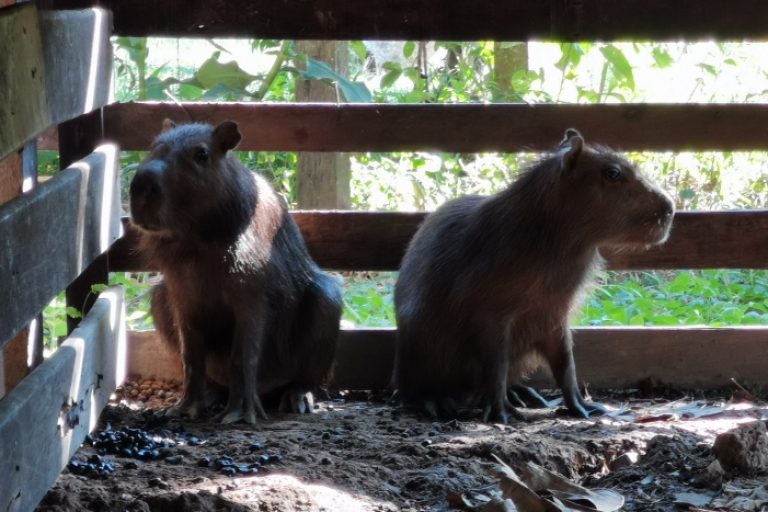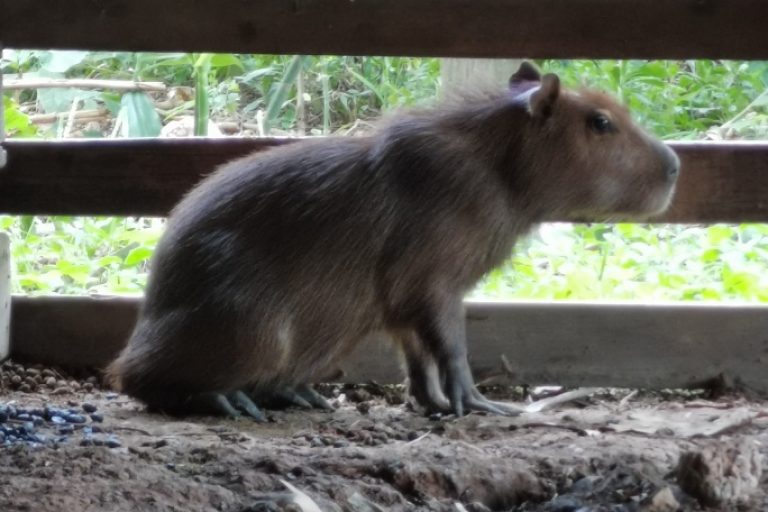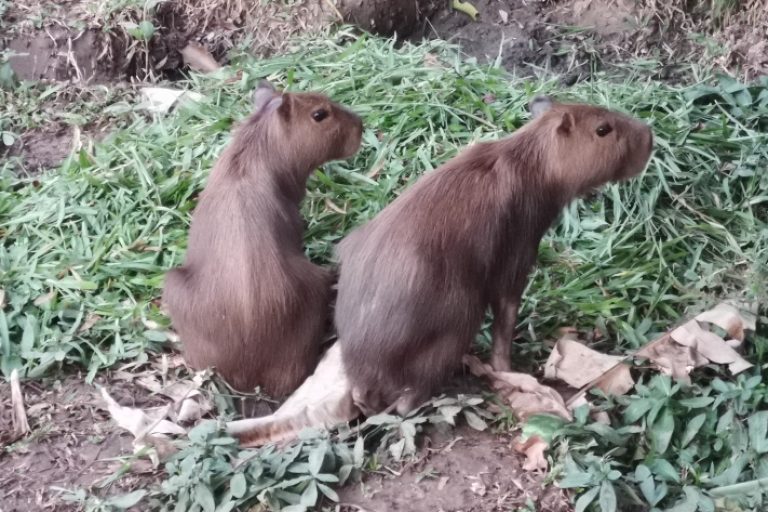One capybara, two capybaras
This year, the dry season in the Amazon turned out to be very tough. Water levels in lakes and rivers have fallen to record lows. The National Service of Meteorology and Hydrology of Peru SENAMHI has declared a RED danger level due to drought and low water levels in reservoirs. Among the recommendations, refrain from moving by water transport, because there is a high probability of staying in shallow water in areas remote from populated areas. In addition, a number of other dangers to the environmental situation in the region have been identified.
The consequence of this extreme drought is that some channels and reservoirs have dried up and animals in search of water have to leave the rainforest and look for water in areas where there are settlements. This began to be used by unscrupulous hunters, for whom there was an opportunity for easy profit. Last week, according to eyewitnesses, a flock of capybaras in search of water came to the lake near the village, which was used by the knackers. Residents of the local village drove away the uninvited guests, but, unfortunately, several members of the pack became prey to poachers.
Knowing that our ecologe always takes care of animals with love, the residents of the local settlement brought us two frightened animals. It took a couple of weeks for the capybaras to settle into a new place and realize that they were not in danger.
What else do we know about capybaras? Firstly, they are the LARGEST RODENTS in the world, which can gain up to 70-80 kilograms in weight! Secondly, capybaras DO NOT SWEAT! Thirdly, they are the owners of the title of the FRIENDLIEST animals in the world! In some countries, “capybaras” are people who behave absolutely calmly with everyone. The name of this species in Latin is Hydrochoerus hydrochaeris, which translates as “water pig”, and in Peru capybaras are called ronsoko, for their characteristic grunting, similar to snoring. From the Spanish roncar – to snore. The name “capybara” came to us from the Amazonian language Tupi and means “eater of fine grass”. And indeed, these rodents eat a lot of grass and can eat up to 70% of their weight per day. In some countries there is a cult of the capybara. For example, in Japan, there are contact zoos with capybaras, the anime character Capybara-san and a huge number of social media channels with photos of these rodents. In Argentina and Brazil, there are specialty stores that sell capybaras as pets. By the way, these animals are even less whimsical in service than cats and dogs. And in some countries of South America, local tribes considered capybaras as guides between the world of people and the world of spirits.
Our new pets, having made sure that they were safe, took up their usual chores, bathing in water, chewing grass and searching for tubers. And since they are used to living in packs, they have no less desire to reproduce than rabbits, which they did in their free time from eating grass. Therefore, we expect an increase in the next 5-6 months. In turn, our Ecologe Uni Rao will try to do everything to make the capybaras comfortable with us, and they, in turn, will delight us with their good nature and photogenicity!






